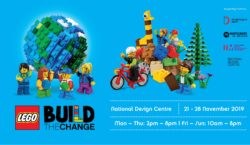Jakob Lykkegaard Pedersen, known from the gaming company Playlab, is clearly one of those uniquely talented entrepreneurs – and who is making it in Asia while having the whole world as his market.
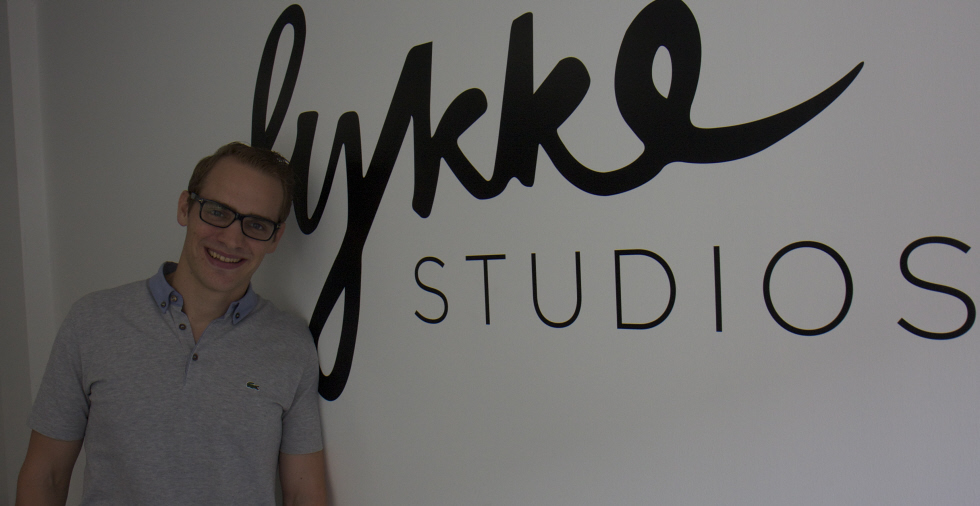
At the age of just thirty Jakob has already succeeded in doing two start-up exits. With his new venture Lykke Studios he has now intentionally reduced the business to the very minimum. No more investors, no more big companies – that is the formula for Jakob going forward – as he is confidently entering the world of Augmented Reality, or AR.
The start could not have been better. When Apple launched their by the tech world much anticipated Augmented Reality (AR) software and hardware solution, Jakob was quick off the starting blocks to realise an AR game based on this – put together within a very short lead time of two months, while based on AR dreams he had been contemplating for year.
“The reason I sold Playlab was that I wanted to move into something new. Apple launched their AR kit, with which they were first in enabling AR to get into the smartphone devices. For many years you had all these augmented reality experiences but you had to have certain conditions to make it work. My mom wouldn’t be able to use them because the light was wrong, the phone wouldn’t work etc.,” explains Jakob.
Then, with one single update, Apple enabled the technology on fourth generation iPhones, and just gave AR away as a free plugin – simply a huge step forward.
Apple launched it on consumer level, with 400+ million devices that supporting it. “That was the call to me: now is the time to actually go into it and build something, because the tech is ready,” Jakob recalls.
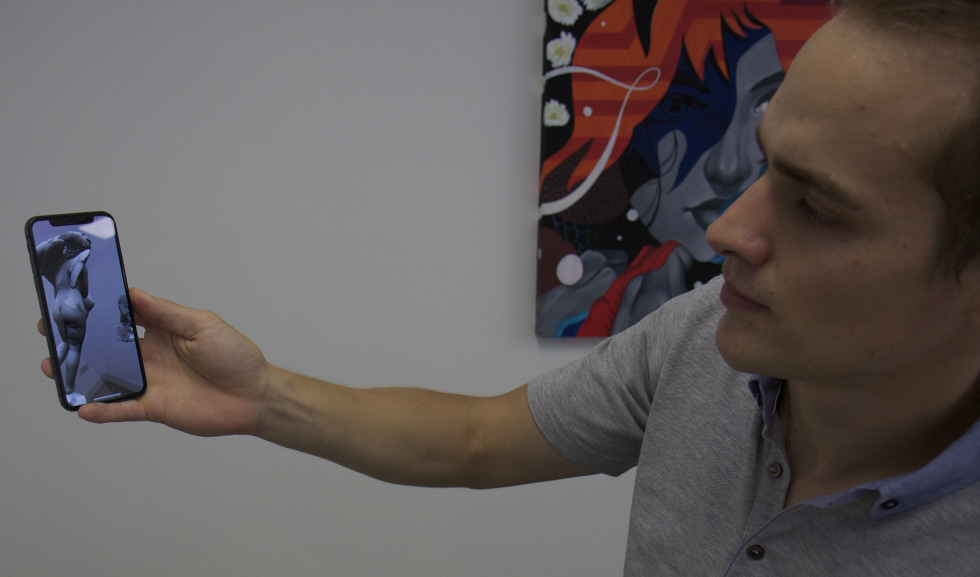
Apple launching AR on smart phones
He then founded Lykke studios, with the main purpose to take new tech and actually making it consumer-ready. “If you look at augmented reality and machine learning a few years back, I would not in my wildest dreams, even if had had unlimited budget and a thousand years, been able to build an app on an AR or machine learning platform – because the tech was not ready yet. I’ve been looking at AR for a long time and it has taken Apple and Google etc. thousands of engineers over many years to build the technologies that I can basically now just plug in to. I can with three guys build something on top of what they have done and open up to consumer’s eyes – and who can actually figure out how it works.”
And that is what Jakob succeeded in doing, right in time for the Apple launch – seeing his AR puzzle experience called Amon being introduced.
“We started developing as soon as Apple announced it and had two months before they actually released it.”
“When the iPhone 10 was launched and they gave the device to the press to show off the new device, Amon was one of three games. So just because we have created great content means that Apple likes it so much that they give it out when they launch a new product. This is the great thing about being in new technologies. Based on their new technology Apple took their entire PR and marketing team promoted the hell out of it. That meant tons of free marketing that we would otherwise never have been able to get.”
“Having a little higher edge you are the one that is being picked out, which gives so much attention that you get much better building blocks for the future off the technology.”
With Apple’s AR technology Lykke Studios are two months ahead of the rest, giving them good partnerships, and that leads on also to other partnerships, the Dane explains.
“You can throw the traditional business model out the window!” continues Jakob. “Charging 3 USD for it we would never have been able to afford TV commercials or user acquisition online or anything else and make it into a profitable business plan. But we’ve been able to create something cool and show it to the world’s most valued company. And they like it so much that they are pushing it because they also want to showcase to their users what their phones and technology can do.”
“It gives us so much free traffic that I will be able to profit from it. And as long as you do something cool people will share and talk about it!” he adds.
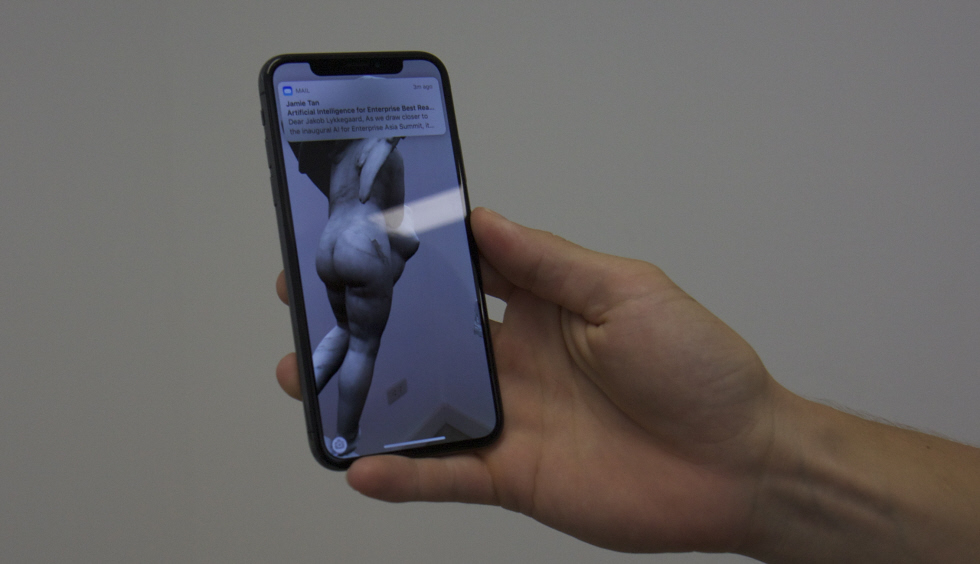
Tricking the mind
The coolness – showcased live by Jakob for ScandAsia – is this: The AR app in the smart phone uses its camera to scan a floor surface, which is then replaced with a graphic environment – all happening live on the camera screen. In Amon the floor cracks open forming an abyss.
“To make this seem as real as possible you can actually see down through the floor.”
Above it 3D scanned sculptures from museums in Europe “float around”, divided into several parts.
“With Amon we wanted to create something that you can’t just play on a screen but need AR to do. I can make experiences for users by placing content on the ground in front of them that the users feel is real and right there; kind of tricking the mind of the users to believe that the virtual thing they are seeing is real.”
“And with the 3D model statues we worked heavily on that you should be able to actually touch them with the phone and get feedback so it feels like actually touching it – as if being real.”
This, combined with using real statues adds to the authenticity.
“Interesting with this game is that it took us quite some time to teach people that they actually have to stand up and physically move around to play the game. That is something that users are not used to at all.”
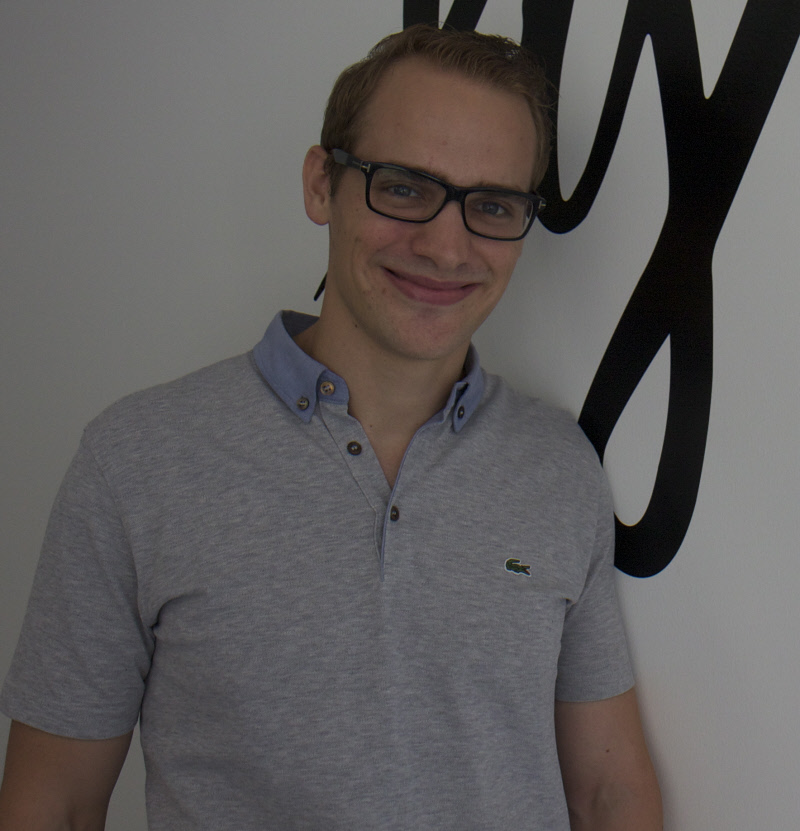 When it suddenly kick off
When it suddenly kick off
Jakob, who is fond of experiences, says this game also increases people’s understanding of AR in general. “I just like to create products and the best products to create to tell people about new technologies I feel are games. Everybody can adapt to that; it’s about taking some of the technologies that have been created over the last few years by thousands of engineers and build small products that I can actually give ito my mom, who will understand.“
If his parents can play it that means the consumer market will be tremendous: “They will become aware of machine learning and AR that will heavily impact them, and which they are now able to interact with. It’s not some futuristic thing; it’s happening now!”
“It will change how everything works in a few years and I’m impressed by how few actually are seeing it coming and how fast I’m expecting it to happen. In the community people have a tendency to heavily over-estimate the short term but underestimate the long-term effect of things,” he elaborates.
Jakob refers to how the excitement often dies out fast, as things take time to develop. But then it suddenly kicks in and transforms industries.
“All sectors will be affected, and I can barely predict next year. I don’t know how the market is going to look like then for any digital, media, or game company because it’s easier to follow trends and look into the future.”
“What I know for sure is that all companies are going to be fully transformed. All these companies are going to rely fully on AR for many of the decisions that are being made. So for me it is very easy to take the aspect of AR and going heavily into studying it and actually having an edge once it comes out.
“The technology is there now, and so is the server power to develop the tools to get it done. So the impact that will have on the world is tremendous, and that’s what I feel is super exciting and that’s where I feel I want to be on the right side of the table when things really kicks in.”
Freedom and validation
Jakob, who has no programming background, likes to go into areas that he doesn’t fully understand but can see an opening in. He subscribes to the saying ‘passionately curious’.
“Whatever I’m interested in I follow heavily on every single aspect. Then you figure out that there are these big holes that nobody is really doing and that are opening up. One market is usually dying and another one is opening. For Lykke Studios AR and machine learning are opening while the Premium side is dying. It’s much easier to follow a wave when it starts and when it becomes big and leave before it breaks.”
So did the sales of Playlab mean getting rid of a sinking ship, since its business model focused on the premium? Not necessarily, it is just becoming much more competitive.
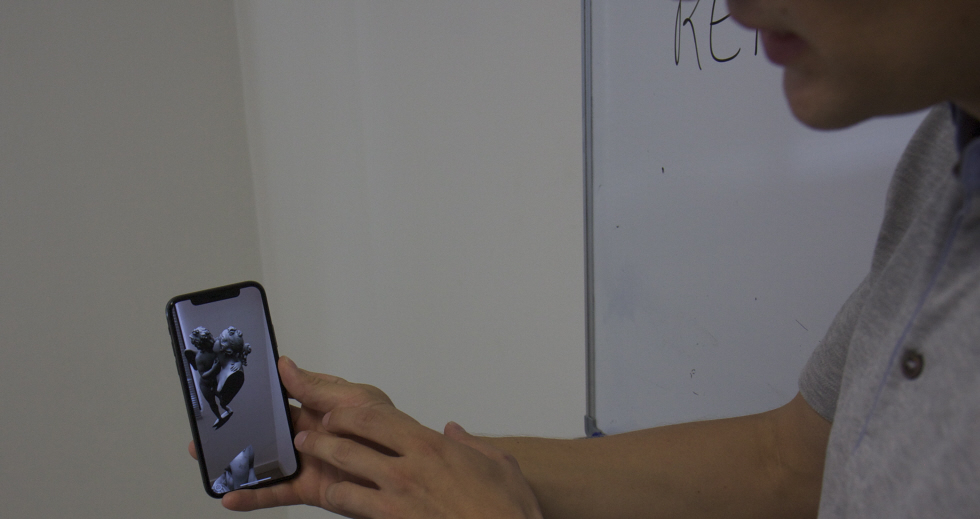
“Why we started Playlab, six years ago was based on the revolutionary thing that games on mobiles started becoming free to download, designed on a system where people got to spend money later on in the game. As one of the first studios within that we developed very successful games.”
Jakob jokingly says it was Danish insider trading: Danes selling to Danes. Thailand’s second largest e-commerce company, Danish-owned Chilindo, is the buyer.
“They have changed the direction of the games a bit. They wanted to take a lot of users from our mobile games and turn them into e-commerce customers, because, when you win something in the game, like a virtual trophy, you might as well win something in real life. And instead of having ads inside the games for other games, you might as well have ads for online purchases, to convert a lot of that traffic into online sales. Instead of spending money on the game they want people to come in and buy products.”
Playlab also had a lot of technical skills that Chilindo needed.
With his new company Jakob however wants to have maximum freedom: “I have turned down many investors already; I choose to personally fund everything because as soon as you get co-partners, co-founders, etc. involved in it, you need to have a plan of how to make money.”
“Not necessarily having a business plan we are already making money at Lykke Studios. But if you start with: ‘How do we make money?’ your product will be so much different than what you came up with and that’s what I want to eliminate.”
However, validation is his guiding principle: “I always liked the market validation. Since I can’t develop anything myself I need to prove the idea before I go out and hire other people to get it done. And I need to put the money into it. In my circle of close friends it’s always about killing each other’s ideas, which is actually amazing because you bring an idea to your friends and if they can’t kill it you know it’s really good. And that’s what I love about the community.”
“I like the entertainment side, because it is easy to grasp and will always be there; people will always play games, they will always want to be entertained – it’s not something that is as niche that will just go away.”
As with other entertainment there will always be a market as long as the quality is there, Jakob believes: “No matter if the games are played on glasses, are free or paid or AR, if you make great content people will buy that, and as long as you are open to adapting to new platforms you’ll be able to change.”
And there is a twist to the story: Jakob has also partnered up with a Norwegian and built ‘Panya’, a live TV app that that has within a short period of time received over one million users in Thailand alone, and where they will after all bring in investors.

